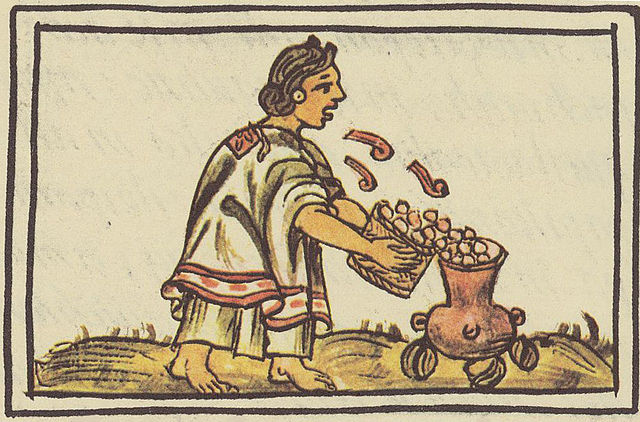Women of Mesoamerica
In Wacken we don't care if the metalheads to the left and right are man, woman or identify differently. More ladies than ever take to our stages in a formerly male-dominated industry. And rightly so; it’s the riffs that matter. But how about the peoples of Mesoamerica, the patrons for this year’s festivities?
In ancient times, the various advanced civilizations had many diverse perspectives on women: In Ancient Egypt they had similar rights as men, sometimes even reigning as queens. The „feminae“ of the Roman Empire, on the other hand, were subject to a strict social code, which effectively made them figures in the political manoeuvres of their fathers and husbands. The Vikings even sent their wives into battle, whereas in ancient Greece they were hardly allowed to participate in social life. But what was the situation like in the powerful empires of the Maya and Aztecs?
Maya
First of all, we should mention that new insights keep coming to light all the time about the Maya (which is quite a broad term; we are using the phrase for simplicity’s sake, but it pertains to a diverse number of peoples). For a long time it was assumed, for example, that the tribes lived together peacefully, but now we understand that they preferred blood vengeance over flower crowns: They wiped out entire cities and thus contributed to the downfall of their formerly powerful civilization in the long run. There are similar developments regarding the position of women among the Maya. While the male part of the population was always considered dominant, researchers have now found evidence of a somewhat more complex social structure.
In a culture marked by superstition and the supposed grace of the gods, mothers and wives were especially revered as bearers of reproductive hope, and girls often served as oracle-priestesses. At the same time they played an important role in forming political alliances, which were cemented by marriages. Researchers also found evidence that some tribes, in a rather cruel tradition, murdered the pregnant daughters of rival rulers to demonstrate their power. Sounds like women didn’t have much say in the matter.
So it is all the more interesting that numerous steles (pillars made of limestone on which the Maya depicted important persons or deities, see also our Artwork!) point to female regents and even female warriors. Additionally, women were in charge of the textile production of the city-states in the Mayan Empire and thus contributed significantly to the economic success of this advanced civilization. Besides that, they cultivated fields and herded cattle.
Aztecs
The Aztecs envisioned a somewhat conservative, yet flexible role for the women within their society. We reckon somebody had to take care of day-to-day business during the advancing militarization of the peoples, while the guys were off pillaging. The ladies were therefore denied access to the military and the wealth associated with it. The preparation of the staple food corn as well as other domestic duties also fell under the responsibility of married Aztec women.
However, the Aztec inhabitants of Mesoamerica expressed their respect for mothers and women as the future of the population in a particularly strong way. As a result, midwives had a relatively high standing. If an expectant mother suffered pain during childbirth, this was considered equivalent to a contribution to war; if she died, she was even honored like a fallen soldier. In addition to their work in textiles and their tending to household duties, female Aztecs could practice the profession of healer or pursue other careers. Incidentally, this also included prostitution, which according to tradition was not considered reprehensible but honorable in this society.
Text & translation: Victoria Schaffrath


